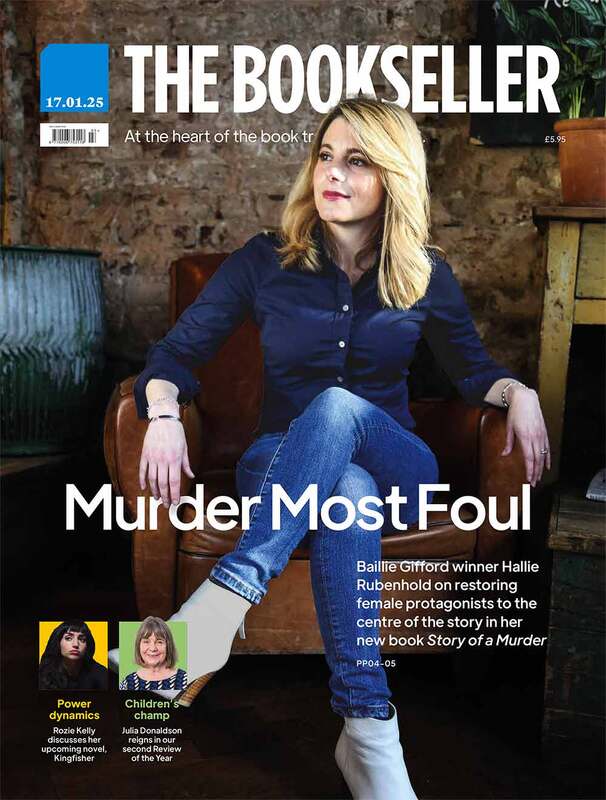You are viewing your 1 free article this month. Login to read more articles.
A brand is a terrible thing to waste
In his manifesto The Art of the Publisher, Roberto Calasso, the noted writer and Chairman of the Adelphi Edizioni publishing house, discusses what constitutes a publisher’s brand. What are the intangible, but powerful, factors that makes a publisher distinctive and compelling?
In his manifesto The Art of the Publisher, Roberto Calasso, the noted writer and Chairman of the Adelphi Edizioni publishing house, discusses what constitutes a publisher’s brand. What are the intangible, but powerful, factors that makes a publisher distinctive and compelling?
In the equally classic How to Advertise (1973), Kenneth Roman and Jane Maas introduce the idea of a brand as an intangible competitive advantage, a "personality that goes beyond the product itself; it is the aura that helps set your brand apart from all others". All publishers intuitively understand the importance of the brand in its purest form: it is why that lovely little colophon is there on the side of every book.
The brand, however, is more than a signature. It is a promise - of quality, of distinction, of personality, of difference. A brand pushes your books to the top of the pile, to the front of the shelf; it makes a judge pay attention, or a reviewer less dismissive. Your brand is your ‘added value’ - often difficult to measure, but present all the same.
Yet, over time, the steady disappearance of the publishing brand renders all publishers - especially large ones - virtually interchangeable. There is the gluttonous urge to be all books for all people; to snatch up each and every possible Next Big Thing. To jump on bandwagons, to follow trends, to ensure that every option is covered.
A brand explains why an author comes to you, as opposed to every other publisher offering the same service. A brand is what makes one of your books one of your books, and not something that any of your competitors could’ve published. A brand is there behind everything you create, everything you say, the events you attend, the wording of your job posts. Your brand is your expression of who you are, your values, and vision.
Where does a brand come from? Roman and Maas suggest it is built; over time, and through effort. They advise that everything you do or say "should contribute to the long-term image of your brand". This too is easy to extrapolate to publishing. Again, in its simplest form, every book should represent its publisher. This goes beyond a logo, the font, or even the cover design. What is a publisher if not the books they put into the world? Popular or niche, pioneering or traditional, mainstream or cutting-edge... the publisher’s values should be understood by the books they put out into the world.
Publishing brands face a particular challenge: too much opportunity. Every day, publishers are presented with a near-infinite assortment of books that they could publish. But they do not - and that moment of choice is when the brand is made; when the publisher decides what is, and what it is not. Calasso agrees, concluding that "there can be no brand unless it is based on a clear, firm selectivity and idiosyncrasy of choice".
This is a natural extension of that classic precept of editorial excellence: kill your darlings. You best tell your story by knowing its essence, and not straying from it. The same is true for a brand.
In practice, selectivity is difficult. Every publisher is continuously offered exciting new ideas, less exciting old ideas (but with proven track records), interesting debuts, safe commodities; opportunities big and small. And many of these are acquired and, eventually, published. This is not merely unbridled enthusiasm, but often a so-called business necessity. We live in a world dominated by monthly budgets and quarterly reports. We are encouraged to prioritise short term gains over long-term positioning. To jump on bandwagons, to follow trends, to ensure that every option is covered.
As a business need, the brand is added value. That distinction is a competitive advantage, and what separates one publisher from the next - or, for that matter, from self-publishing. A personality, a heritage, a consistent offer: these are things that are earned, not bought, and should not be left fallow, or to rot.
As an artistic need, a brand explains who you are and what you believe in. It is the expression of your vision. This vision should be understood, and preferably owned, by everyone - not just those making acquisitions, but by everyone. Anyone that sells books or rights, designs covers, meets author or agents, or speaks to reviewers, bookshops, or readers. Everyone should know what you stand for, and how that comes to life in this, and every, title.
There are many brand-building tools freely available, or, if you’re feeling confident, tools that can help you regularly check your brand and ensure it stays healthy. The brand key model is a useful exercise, as is the Johari window. Nesta have a whole toolkit for helping you explore your brand’s values and positioning - designed for start-ups, but useful for any business. Be bold. Take a quick hour with a few team members and do a quick health check: do you know your brand? If not, who does? If no one, is it time to start building?
A brand is valuable, essential, irreplaceable and, by definition, yours. Are you letting it go to waste?
Jared Shurin is head of strategy at M&C Saatchi’s Social Impact Practice. He is also a reviewer, speaker and editor. His latest book is The Outcast Hours (with Mahvesh Murad, published by Solaris).




